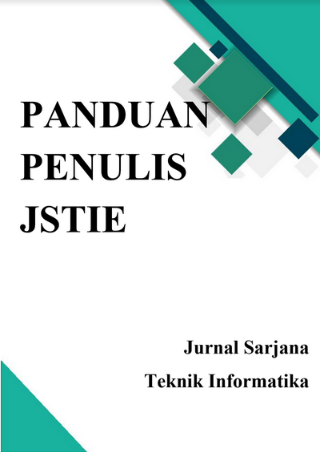MEMBANGUN GAME EDUKASI MUSIK BERBASIS MULTIMEDIA UNTUK MENINGKATKAN KEPEKAAN BERMUSIK
DOI:
https://doi.org/10.12928/jstie.v4i2.10757Abstract
Melalui multimedia, pengguna tidak sekedar melibatkan kemampuan inderawi yang ada serta memiliki kekuatan daya tarik semata, namun juga dapat memberikan stimulan yang baik dalam merespon pengetahuan yang diajarkan secara komprehensip. Dari hasil survey yang dilakukan dengan mengambil 20 sampel bahwa game untuk melatih kepekaan bermusik masih sedikit. Mengacu pada kebutuhan akan sebuah media interaktif yang mampu digunakan untuk meningkatkan kepekaan bermusik, maka masalah pokok dalam penelitian ini adalah “Membangun Game Edukasi Musik Berbasis Multimedia Untuk Meningkatkan Kepekaan Bermusikâ€.
Metode penelitian yang di gunakan adalah qualitative research atau case study (studi kasus) dengan pendekatan di UKM Seni Musik UAD. Sedangkan metode untuk pengumpulan data dilakukan beberapa cara seperti studi pustaka dengan mengambil data dari bahan pustaka yang relevan dengan bahan penelitian, wawancara dan survey. Tahap pengembangan meliputi analisis, perancangan sistem, dan implementasi sistem.
Hasil dari penelitian ini adalah didapatnya sebuah perangkat lunak tentang game edukasi (edugames) untuk meningkatkan kepekaan bermusik. Penelitian ini sudah sesuai, mengandung unsur edukasi dan dapat membantu meningkatkan kepekaan bermusik, didukung data kuantitatif dengan hasil persentase penilaian black box test yaitu, Ya = 7/7 x 100%, Tidak = 0/7 x 100= 0%.
 Kata Kunci : Game Edukasi, Kepekaan Bermusik, Multimedia, Solfegio
References
Agustinus Nilwan. 2010. Pemrograman Animasi dan Game Profesional. Jakarta: PT Elex Media Komputindo
Amri. 2009. Perfect Pitch. http://www.oocities.org/gitarkita/perfect.html.
Ariesto Hadi Sutopo. 2007. Pemrograman Flash Dengan PHP dan MySQL. Yogyakarta : Graha ilmu
Muhammad Lailan A. 2010. Pengembangan Multimedia Pembelajaran Pada Mata Pelajaran Kemuhammadiyahan Bagi Siswakelas I Madrasah Mu’allimin Muhammadiyah Yogyakarta. Tesis. Surakarta: Program Pasca Sarjana Teknologi Pendidikan UNS
Pono Banoe. (2003). Kamus Musik. Jakarta : PT. Kanisius. Departemen Pendidikan dan KebudayaanDepdiknas
Simon Egenfeldt-Nielsen. 2007. Third Generation Educational Use of Computer Games. Denmark: IT University of Copenhagen
Suyanto, M. 2003. Multimedia alat untuk Meningkatkan Keunggulan Bersaing, Yogyakarta: Andi Offset
The American Dictionary. 2014. https://www.ahdictionary.com/word/search.html?q=multimedia
Published
Issue
Section
License
License and Copyright Agreement
In submitting the manuscript to the journal, the authors certify that:
- They are authorized by their co-authors to enter into these arrangements.
- The work described has not been formally published before, except in the form of an abstract or as part of a published lecture, review, thesis, or overlay journal. Please also carefully read Journal Posting Your Article Policy.
- The work is not under consideration for publication elsewhere.
- The work has been approved by all the author(s) and by the responsible authorities – tacitly or explicitly – of the institutes where the work has been carried out.
- They secure the right to reproduce any material that has already been published or copyrighted elsewhere.
- They agree to the following license and copyright agreement.
Copyright
Authors who publish with Jurnal Sarjana Teknik Informatika agree to the following terms:
- Authors retain copyright and grant the journal right of first publication with the work simultaneously licensed under a Creative Commons Attribution License (CC BY-SA 4.0) that allows others to share the work with an acknowledgement of the work's authorship and initial publication in this journal.
- Authors are able to enter into separate, additional contractual arrangements for the non-exclusive distribution of the journal's published version of the work (e.g., post it to an institutional repository or publish it in a book), with an acknowledgement of its initial publication in this journal.
- Authors are permitted and encouraged to post their work online (e.g., in institutional repositories or on their website) prior to and during the submission process, as it can lead to productive exchanges, as well as earlier and greater citation of published work.







